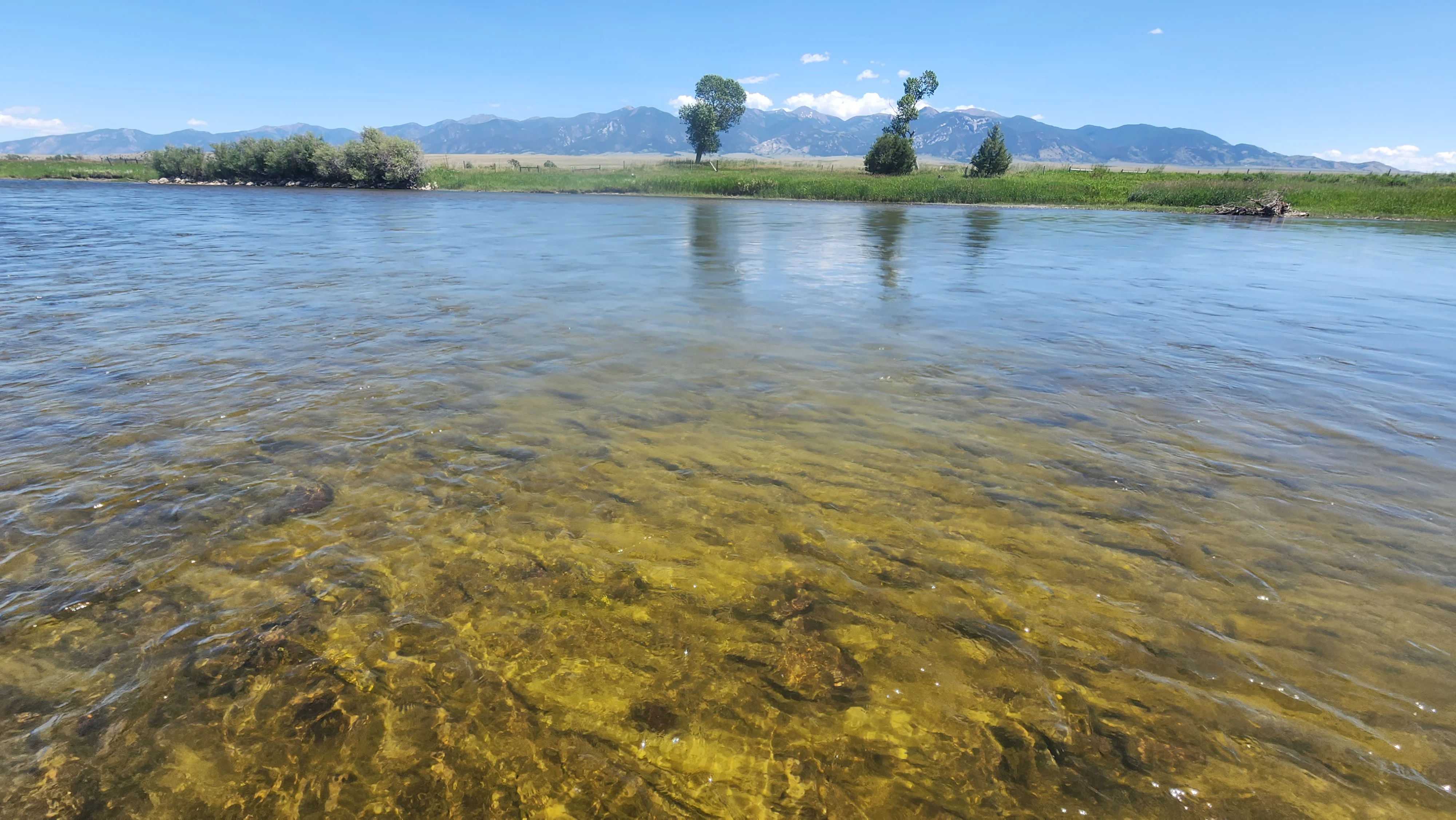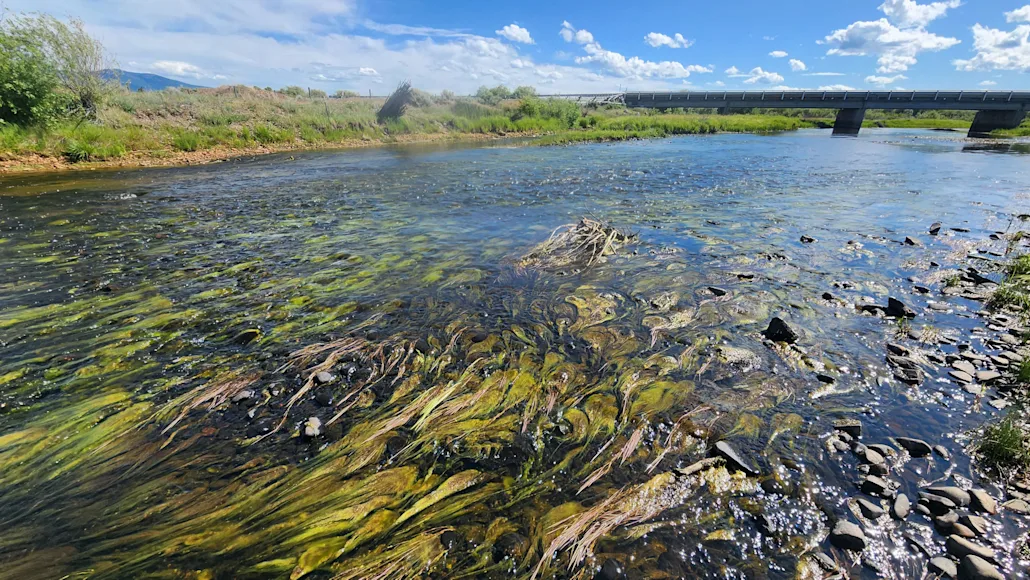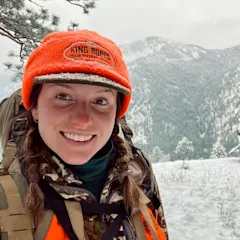When Brian Wheeler set out to install water quality monitoring equipment in the Big Hole River near Twin Bridges, Montana on June 28, he encountered an unexpected sight. In many parts of the river, the water had begun to turn the putrid shade of green characteristic of algal blooms.
Algal blooms are caused by a specific set of conditions that waters in the West are increasingly prone to. When hot water temperatures combine with high amounts of nitrogen and phosphorus—two nutrients that frequently enter surface waters through agricultural runoff—the result is a blossoming cloud of algae spreading through the water. As that bloom grows, it consumes much of the water’s dissolved oxygen content in the process, resulting in hypoxia and lots of dead fish.
Wheeler was less alarmed about what he saw and more concerned with when he saw it. These blooms usually don’t show up in the rivers of southwest Montana—a trout angler’s paradise and a cornerstone in the state’s $900 million-per-year fishing industry—for another month or so. But they came so early this year that they even preceded some of Wheeler’s dissolved oxygen data collection, which non-profit trout and water conservation organization Save Wild Trout (SWT) has conducted in the Jefferson River Basin for years.

Wheeler is on the advisory board of SWT, based in western Montana. He was the executive director of the Big Hole River Foundation, which recently joined forces with SWT to expand both organizations’ capacity for data collection and water quality advocacy. SWT collaborates with the Montana Department of Environmental Quality and Montana Fish, Wildlife & Parks to gather environmental data that fills knowledge gaps and supports the state’s wildlife, fisheries, and habitat management.
This work is especially important in Beaverhead County. It’s the largest county in the state in terms of square mileage. It also regularly ranks as the highest livestock-and-forage-producing county in the state, which requires an immense amount of irrigation. And, depending on who you ask, it’s home to some of the best fly fishing in the West writ large. All these claims to fame, plus the steady march of climate change, put a lot of additional stress on the county’s water resources, Wheeler explains.
“Everything’s been early this year,” Wheeler said. “June [was] really behaving like July. We’ve had several drought years in a row, and soil moisture levels are so low that even [this year’s] reasonable snowpack isn’t really getting all the way back to the rivers.”
MDEQ identifies a series of beneficial uses that all surface waters in the state are mandated to support. They include irrigation, drinking water, bathing and recreation, industrial use, and the support of aquatic life.
“But we’re not fully supporting aquatic life,” Wheeler said. “We don’t even need our own data to show that; fish counts show that. Bug data shows that. Aquatic invertebrate communities are shifting, and we’re seeing fewer mayflies, stoneflies, and caddisflies. Anglers are noticing that these hatches aren’t what they were twenty years ago. Ranchers are feeling it, too. Irrigation is tricky because everyone has a water right, and soil moisture levels are so poor. So it’s sort of a ‘death by a thousand cuts’ situation.”

Wheeler and SWT sent out a press release on July 1 warning the conservation community of these early algal blooms, which Wheeler also found in the Jefferson and Boulder rivers after covering 500 miles in one weekend of field work. SWT will continue their monitoring efforts throughout the summer. They will also continue sharing their data with MDEQ, which will start their own monitoring work in the weeks ahead. Wheeler also encourages anglers and recreators to use MFWP’s sick and dead fish reporting tool as needed.
Ultimately, SWT’s wider goal is to emphasize the extreme importance of improved data collection to the future of healthy and thriving aquatic ecosystems across the state and the region, Wheeler said. Water quality, bugs, fish, the fishing industry, irrigators, livestock, and residents all depend on that future—common ground that’s easy to overlook when playing tug-of-war with a resource as limited and precious as water.
Read Next: Trump Administration to Revoke Roadless Rule Protections on 58 Million Acres of Public Land
“Certainly climate change is having a noticeable impact, regardless of whether you’re willing to say those words or not,” he said. “We’ve tried the ‘fishermen versus ranchers’ thing. It’s been a failure. The head-butting just keeps good, collaborative work from getting done. Whether you’re a fishing guide or an irrigator, we’re all neighbors. And right now, everybody’s taking a hit.”


